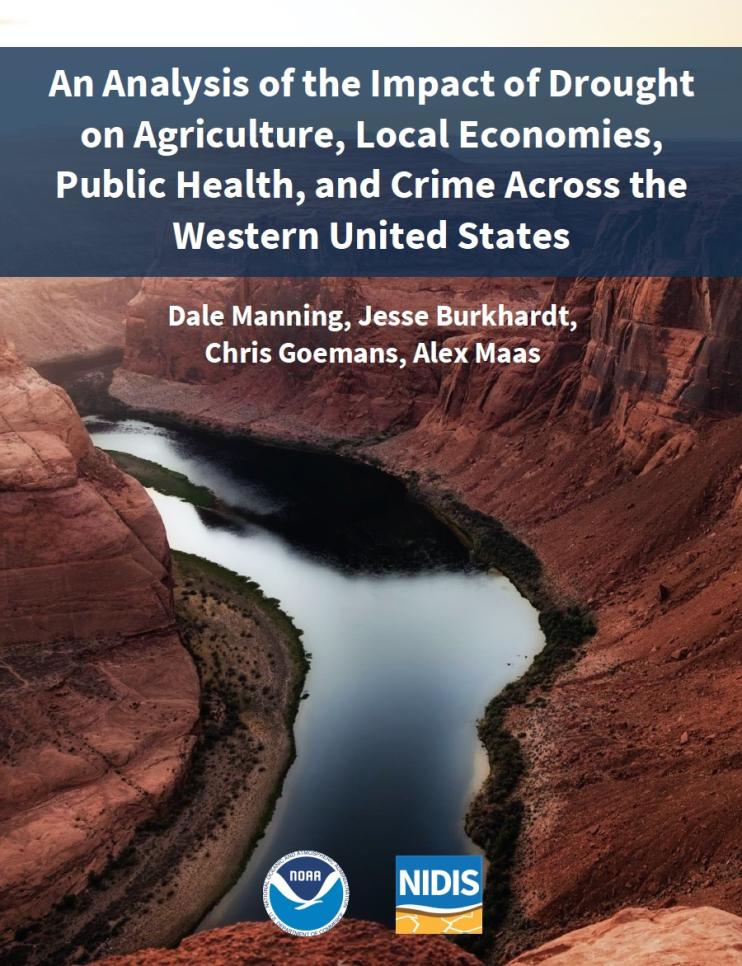An Analysis of the Impact of Drought on Agriculture, Local Economies, Public Health, and Crime Across the Western United States
Severe, extreme, or exceptional drought conditions have become increasingly common throughout the western United States over the past 20 years. Abnormally dry conditions can lead to a wide range of negative economic impacts across a wide range of sectors that either directly or indirectly depend on weather-dependent ecosystem services.
In a NIDIS-funded study, researchers at Colorado State University and the University of Idaho led an analysis of the impacts of drought on agricultural productivity; local wages, employment, and number of establishments; insurance indemnity payments and policy counts; health outcomes; and criminal activity across the Western United States.
The goal of this study is twofold:
- Utilizing approximately 40 years of county level data from across the western United States, the researchers attempt to empirically identify the impact of drought on society. This includes characterizing how drought impacts agricultural productivity, employment, wages paid, business openings/closings, criminal activity, and health outcomes.
- The second objective is to develop a low-cost, spatially and temporally generalizable means of simulating the impact of specific droughts on society. This information not only helps in terms of responding to the current drought, but also aims to inform planners and policymakers of the potential changes that will result as drought becomes more frequent.





